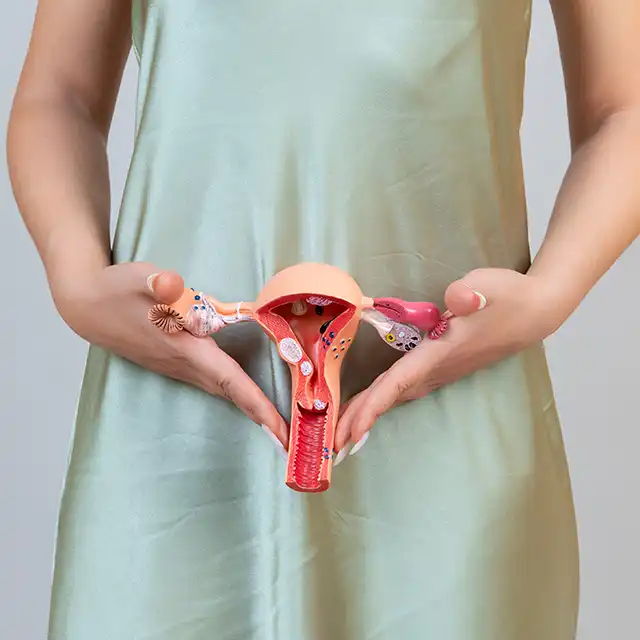
Jaundice is the yellow discoloration of the skin and whites of the eyes (sclera) due to an excessive build-up of bilirubin, a yellow-orange pigment, that permeates all the body’s tissues. Bilirubin is the by-product of the breakdown of red blood cells (RBCs) and is responsible for the yellowish colour of stools and urine.
Jaundice can be a sign of a serious underlying medical condition, especially in relation to the liver. It is vital to diagnose the cause of jaundice and provide therapies to lower bilirubin levels. Elevated levels of bilirubin in the blood for prolonged periods can lead to brain damage (kernicterus) which is life-threatening.
Signs and symptoms
While the yellowish discoloration of skin and whites of the eyes is the classical identifier that a person is suffering from jaundice, others include tarry or pale-coloured stools and dark mustard-coloured urine.
Other symptoms are generally dependent on the cause of the jaundice and may include one or more of the following:
- Fatigue or excessive tiredness
- Abdominal pain
- Weight loss
- Nausea or vomiting
- Fever
- Itching
Causes
To understand what causes jaundice, it’s important to understand how the body processes bilirubin, starting with the breakdown of red-blood cells in the liver. Bilirubin is the end product of this process, and there are several chemicals in the liver that help make it water soluble for easier discharge from the body.
This bilirubin then passes through a network of bile ducts in the liver and empties into the common bile duct that is attached to the duodenum (first part of the small intestine). The gall bladder also stores bile – a mixture of bilirubin, cholesterol, and bile salts – which is released into the duodenum to aid digestion and to get rid of it.
Any disruption of this process can result in an excessive build-up of bilirubin in the body. This can happen due to one of several reasons:
- Conditions such as malaria, hemolytic anemia, sickle cell anemia, thalassemia and Gilbert syndrome that lead to increased breakdown of RBCs.
- Hepatitis, or inflammation of the liver, which impairs its ability to process bilirubin and clear it out properly via the bile ducts.
- In liver cirrhosis where the healthy cells of the liver are replaced with scar tissue leading to complete loss of ability to process bilirubin.
- Obstructive jaundice in which there is inflammation or obstruction of the bile ducts that prevents disposal of bilirubin.
- Hereditary conditions such as Gilbert’s Syndrome, Crigler-Najjar Syndrome and Wilson’s Disease that cause defects in the enzymes that process bilirubin.
- Gall bladder stones can end up blocking the common bile duct, causing bilirubin to seep into the bloodstream.
- Pancreatitis, in which there is inflammation of the pancreas, could end up blocking the common bile duct.
- Cholestasis is a condition where the conjugated bilirubin remains in the liver instead of being disposed.
Diagnosis
Jaundice and its cause can be diagnosed based on inferences from the symptoms, liver function test and medical imaging. Some of these methods include:
- A liver function test determines the levels of bilirubin and liver enzymes such as aspartate aminotransferase (AST), alkaline phosphate (ALP), alanine transaminase (ALT), gamma-glutamyl transferase (GGT), serum glutamic-oxalocetic transaminase (SGOT), serum glutamic-pyruvic transaminase (SGPT) in the blood.
- Other blood tests are conducted to look for lactate dehydrogenase (LDH), prothrombin time (PT-INR), serum proteins and their ratio (albumin and globulin), to help determine the severity of liver damage.
- Imaging tests such as fibroscan to detect the extent of liver damage, MRI/CT scan to detect the exact location of damage or obstruction in the liver and ultrasound to identify blockage due to gallstones are also used.
Treatment
While there currently is no way to treat a damaged liver, the organ has the ability to heal itself. Most treatments for jaundice are therefore focused on faster healing and preventing further damage of the liver. The medicines used for this are referred to as hepaprotective medications and include L-carnitine, Vitamin C, and Lactulose among others.
In cases where the jaundice is caused by other factors not relating to the liver like in hemolysis or impairment of bile ducts or gall bladder, several approaches can help improve the condition. These include:
- Medication to treat an underlying infection like malaria or viral hepatitis
- Blood transfusion in case of sickle cell anemia, thalassemia
- Surgical procedures to remove-gall stones, a section of damaged or narrowed bile duct, or a section of swelled pancreas.
In extreme cases, a liver transplant from a compatible donor is another possible option.
Sources

















